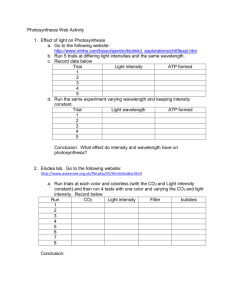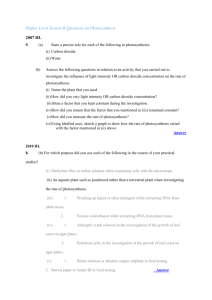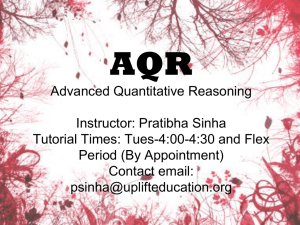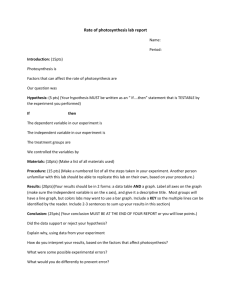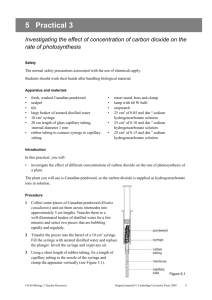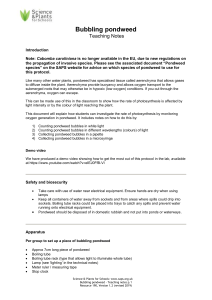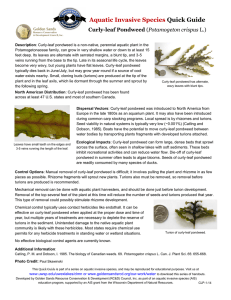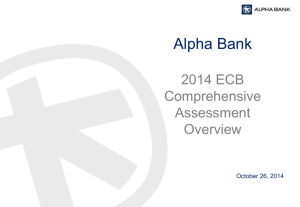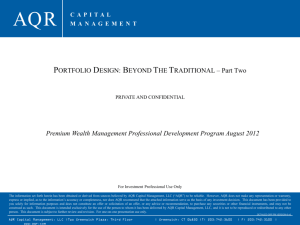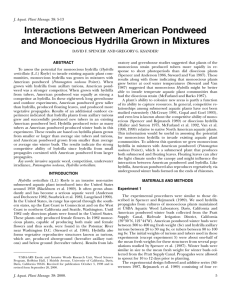Equipment required per student/group: Student activity AB2.10.1
advertisement
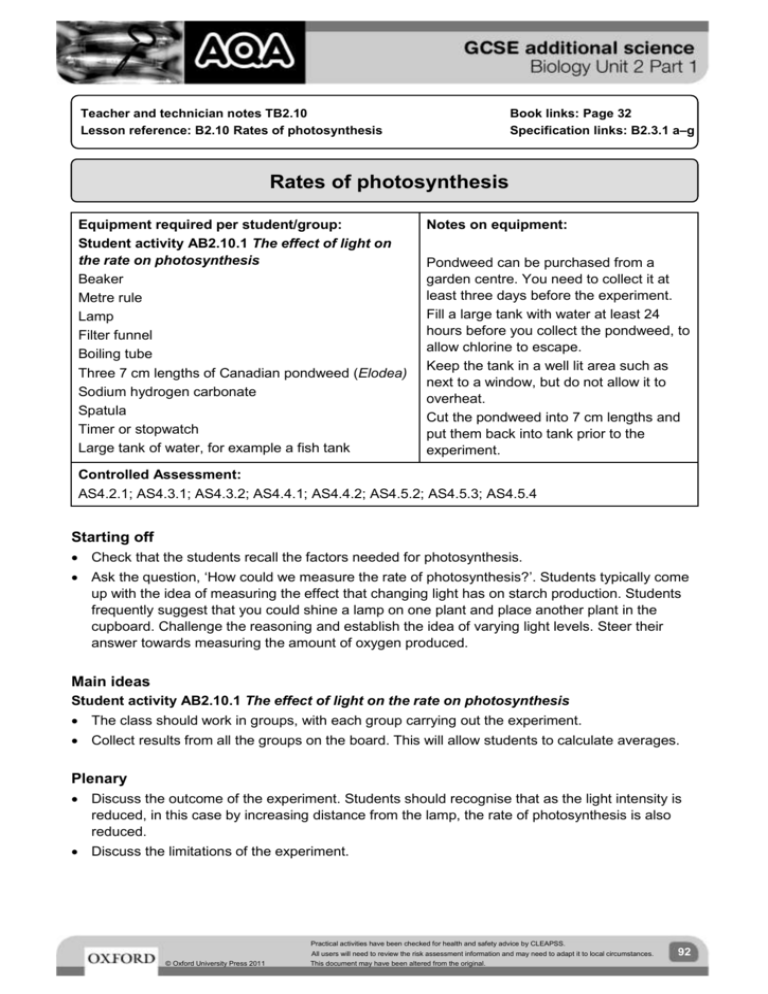
Teacher and technician notes TB2.10 Lesson reference: B2.10 Rates of photosynthesis Book links: Page 32 Specification links: B2.3.1 a–g Rates of photosynthesis Equipment required per student/group: Student activity AB2.10.1 The effect of light on the rate on photosynthesis Beaker Metre rule Lamp Filter funnel Boiling tube Three 7 cm lengths of Canadian pondweed (Elodea) Sodium hydrogen carbonate Spatula Timer or stopwatch Large tank of water, for example a fish tank Notes on equipment: Pondweed can be purchased from a garden centre. You need to collect it at least three days before the experiment. Fill a large tank with water at least 24 hours before you collect the pondweed, to allow chlorine to escape. Keep the tank in a well lit area such as next to a window, but do not allow it to overheat. Cut the pondweed into 7 cm lengths and put them back into tank prior to the experiment. Controlled Assessment: AS4.2.1; AS4.3.1; AS4.3.2; AS4.4.1; AS4.4.2; AS4.5.2; AS4.5.3; AS4.5.4 Starting off Check that the students recall the factors needed for photosynthesis. Ask the question, ‘How could we measure the rate of photosynthesis?’. Students typically come up with the idea of measuring the effect that changing light has on starch production. Students frequently suggest that you could shine a lamp on one plant and place another plant in the cupboard. Challenge the reasoning and establish the idea of varying light levels. Steer their answer towards measuring the amount of oxygen produced. Main ideas Student activity AB2.10.1 The effect of light on the rate on photosynthesis The class should work in groups, with each group carrying out the experiment. Collect results from all the groups on the board. This will allow students to calculate averages. Plenary Discuss the outcome of the experiment. Students should recognise that as the light intensity is reduced, in this case by increasing distance from the lamp, the rate of photosynthesis is also reduced. Discuss the limitations of the experiment. Practical activities have been checked for health and safety advice by CLEAPSS. All users will need to review the risk assessment information and may need to adapt it to local circumstances. © Oxford University Press 2011 This document may have been altered from the original. 92 Further information Student activity (AB2.10.1) The effect of light on the rate of photosynthesis requires students to draw a graph of their results and answer conclusion questions. Answers Student activity AB2.10.1 The effect of light on the rate on photosynthesis Spreading the word A The greater the light intensity, the more bubbles are produced, or vice versa. B It will dissolve in the water to release carbon dioxide for the pondweed. C The limiting factor is light intensity. D Another factor that affects the rate is temperature. E Use a clear plastic screen (or a column of water) between the pondweed beaker and the lamp. This will absorb the heat but not block any of the light. F It is not a very accurate measure. The bubbles are difficult to count if they are produced fast, and so some will be missed. They will be of different sizes and so have a different volume of oxygen. G Place the pondweed in a tube which is attached to narrow capillary tubing. Then record the volume. H Temperature – use different temperature water baths. Carbon dioxide – add different amounts of sodium hydrogen carbonate to the beaker with the pondweed. Homework task HB2.10.1 Rates of photosynthesis A The three most important factors are light intensity, carbon dioxide levels, and temperature. B In any reaction which is controlled by more than one factor, the factor at the lowest level is the limiting factor. C i Light intensity, as the clouds block the sun. ii Temperature, as it is cold in winter. iii Carbon dioxide as there is competition for the gas with the other plants. D i Burning fossil fuels increases the temperature and the level of carbon dioxide. ii Another way to improve plant growth is to use artificial lighting. E i The limiting factor is light intensity because as light intensity increases, so does the rate. ii The limiting factor is temperature because when the temperature is increased, the rate is also increased. Practical activities have been checked for health and safety advice by CLEAPSS. All users will need to review the risk assessment information and may need to adapt it to local circumstances. © Oxford University Press 2011 This document may have been altered from the original. 93

